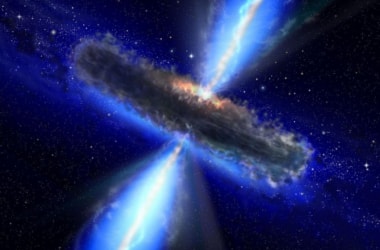
Astronomers using the Sloan Digital Sky Survey (SDSS) have created the first map of the large-scale structure of the universe based entirely on the positions of quasars.
Quasars are incredibly bright and distant points of light.
The quasars are so bright that they can be seen all the way across the universe and that is what makes them the ideal objects to use to make the biggest map yet.
The extra brightness of the quasars is due to the super- massive black holes found at their centres.
As matter and energy fall into a quasars’ black hole, they heat up to incredibly high temperatures and begin to glow.
Scientists used the Sloan Foundation Telescope to observe the innumerable quasars in order to make the map.
During the first two years of the survey, astronomers measured accurate three-dimensional positions of more than 147,000 quasars.
The telescope observations gave the team the distances of the quasars, which were used to create a three-dimensional map of where the quasars are located.
Sloan Digital Sky Survey: Know More- The survey known as Sloan Digital Sky Survey was extended to Baryon Oscillation Spectroscopic Survey (eBOSS) to better understand the expansion history of the universe.
- The process involved studying baryon acoustic oscillations, which are the present-day imprint of sound waves that travelled through the early universe, when it was much hotter and denser than today.
- However, due to a sudden change in conditions when the universe was 380,000 years old, the sound waves became “frozen” in place.
- These frozen waves are left imprinted in the three- dimensional structure of the present-day universe. The study confirms the standard model of cosmology that researchers have built over the last 20 years. In this standard model, the universe follows the predictions of Einstein’s General Theory of Relativity, but includes components that cannot be measured or causes not understood.